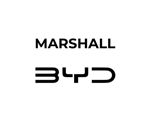It means dealers are wasting money on functions in their dealer management systems (DMS) that they not using; functions that could be saving them money through simplifying processes.
Dave Hayward, managing director of software supplier MMI, says: “People don’t know what the DMS does.
They were trained years ago, so their product knowledge is diminishing while the product itself is getting bigger.
“No matter how much it costs, it’s essential to know how to exploit it to its full potential.”
Declining margins, rising overheads and increasing competition make it even more pressing for businesses to adopt technology as a way to streamline day-to-day operations and cut costs.
Dealer management systems underpin almost all areas of the business, both customer facing and administrative, and are a valuable tool for marketing, record-keeping and keeping track of operations.
If used effectively, they should create a more streamlined business with departments all pulling data from the same pool.
As the capabilities of the DMS expand, it is vital that staff are aware of new features which could make their job easier.
In turn, this should help them to be more productive in their role, saving more money.
Manufacturers have been quick to recognise the potential of these systems, and their demands have helped drive the market forward.
Accessing the information has become simpler, and the interfaces are now more often based on instantly recognisable consumer software.
Transferring to an electronic system throughout the business allows tighter cost control and improved efficiency by speeding up transactions and providing a solid audit trail.
Management can access and use live information about the business and use it to improve performance, and the DMS can provide this in whatever format they require.
Transactions go electronic
The proliferation of computer systems in dealerships is showing up in customer trends.
Ten years ago, cheques and bankers’ drafts were the most common form of payment for customers.
More recently, this has shifted towards electronically-processed transactions, usually via card and most recently via the widely publicised switch to Chip and Pin systems across all businesses.
According to APACS, the UK payments association, consumers have been quick to adopt the new technology.
Within six months of its introduction 92% of the 141 million UK cards were Chip and Pin.
The result is a marked fall in the volume of cheques being processed by retailers, down by a third in the last four years alone.
This presents obvious opportunities for more transactions to go through the DMS.
Providers have already begun to take note.
Pinewood introduced the technology into its system last year, and, as more companies convert to Chip and Pin, it’s likely that customers will come to expect this from the motor trade.












Login to comment
Comments
No comments have been made yet.